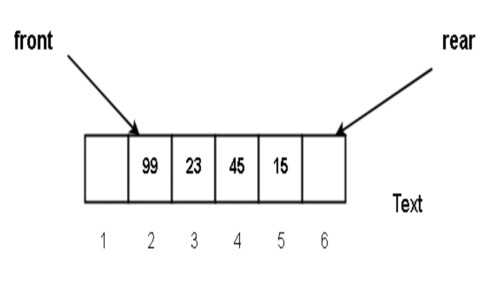A queue is a data structure that organizes items in a way that allows for access to the oldest item first. Queues are often used when scheduling tasks, as tasks are processed from the front of the queue first and must be completed sequentially.
A queue is an abstract data type that is similar to a line, where elements enter a line at one end (the back) and exit the line at the other end (the front). This process is called enqueue (adding an element to the queue) and dequeue (removing an element from the queue). Because queues are organized in this way, they are often referred to as FIFO (First In First Out) data structures.
An example of a queue data structure is a line at a ticket window. Customers who enter the line enter at the back, and those at the front will purchase their tickets first.
Another example of a queue data structure is a printer queue. Printers receive a list of jobs, and the jobs are printed in the order in which they were received.
Queues are also commonly used in computer science applications. One common use is for scheduling operations in an operating system. Operating systems can use queues to manage various processes, such as printing jobs, executing programs, or managing disk access.
In addition, many computer networks employ queues in order to transmit data over a network. Queues are used to store packets of data, so that they can be sent in the correct order. The packets are first added to the back of the queue, and then removed from the front of the queue when it is time to send the packet.
Finally, queues are also used in computer algorithms. Algorithms often make use of queues in order to accomplish tasks more efficiently. For example, breadth-first search uses a queue to determine the order in which nodes are visited in a graph.
In summary, a queue data structure is a linear data structure that stores items in a particular order. Queues are most commonly used to organize tasks that must be completed in a certain order, such as printing jobs or network packets. They can also be used to improve the efficiency of computer algorithms, such as breadth-first search.




